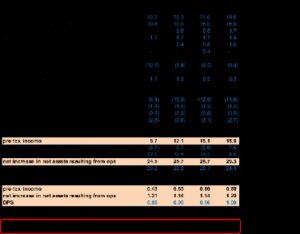
With recurring billing, businesses can also reduce the risk of late or missed payments, which can cause cash flow problems and affect their financial stability. It’s like having a consistent flow of water from a tap that keeps your plants hydrated rather than randomly pouring water on them and hoping for the best. In accounting, billing is a crucial component of the revenue cycle and a key factor in ensuring business success.
What Is Billing In Accounting
One time billing refers to a billing model where a customer is charged a single, one-time fee for a product or service. This type of billing is typically used for purchases that do not require ongoing payments or subscriptions. The customer is usually provided with an invoice detailing the product or service purchased, the amount charged, and any applicable taxes or fees.
A streamlined and transparent billing process contributes to improved cash flow, reduced payment delays, and a stronger financial foundation for the business. The billing process involves financial record-keeping and the systematic organization of transactions to accurately reflect the financial activities of a business. It encompasses tasks such as tracking expenses, calculating revenue, and generating detailed billing statements. In addition to keeping track of transactions, invoice billing also helps businesses manage their cash flow. By sending out invoices promptly and following up on any overdue payments, businesses can ensure that they have a steady stream of revenue coming in. It’s like a personal accountant, but without the judgmental looks when you spend too much on coffee.
Make invoices easy to understand at a glance by highlighting key details like due dates and total charges. Adhere to tax, data privacy, e-invoicing, and other compliance rules in your region. Prompt follow-up on overdue payments is crucial to ensure steady cash flow for businesses. It also helps maintain positive relationships with customers by addressing payment issues in a timely and respectful manner. Accurate and detailed billing statements they ensure that the customer is aware of all charges and can verify that they are correct.

Difference Between Capital Expenditure and Revenue Expenditure
The billing process is a set of steps that a business follows to create and send invoices to its customers for the products or services provided. It typically involves gathering customer and product/service information, generating an invoice, sending it to the customer, and tracking payment. The billing process is essential for maintaining accurate financial records and ensuring timely payment for goods and services is sales tax an expense or a liability rendered. Additionally, billing in accounting involves maintaining a systematic record of all invoices issued and monitoring the payment status of each invoice. This allows businesses to track outstanding payments, follow up with customers for overdue invoices, and reconcile payments received with the corresponding invoices. By efficiently managing the billing process, businesses can effectively track their revenue, identify potential cash flow issues, and ensure timely collections.
Tracking and Recording Financial Transactions
The invoice template must be professional and contain relevant details, such as the itemised list of goods supplied, the supplier’s details, the business logo, payment mode, etc. There are various online sources and tools for professional invoices to be designed and used on the fly. Here, the billing is done only once the goods are supplied, or the services are rendered. Once a product or service has been provided or a project has been completed, the payment is made. Follow up on past due invoices consistently with email or phone call reminders.
- Progress billing is a method where billing is done incrementally throughout the life of the project.
- A milestone is an event that signifies an essential change or completion of a phase in a particular project.
- By gaining a comprehensive understanding of billing, businesses can optimize their financial operations and improve customer satisfaction.
- The billing amount is determined by measuring or metering and charging based on specific usage metrics.
The business collects payment for a certain amount or duration of service upfront, and then provides the how to prepare a balance sheet for a startup company goods or services as promised. The prepaid billing system helps businesses ensure a steady stream of revenue and reduces the risk of non-payment or delayed payment. The customer benefits from the convenience of not having to make individual payments for each transaction.
Businesses rely on accurate billing to maintain financial stability, make informed financial decisions, and comply with legal and regulatory requirements. Accurate billing enhances customer satisfaction, fosters trust, and strengthens customer relationships. The first step of any billing process involves collecting and analysing the data needed to create an accurate invoice. The precise detail of the billing information needed will vary depending upon whether your business provides goods or chapter 19 audit of acquisition and payment cycle services. It’s also important to maintain open communication with customers and promptly address any billing concerns or disputes. Invoice billing is a process of generating and sending an itemized bill to a customer or client for goods or services provided by a business.